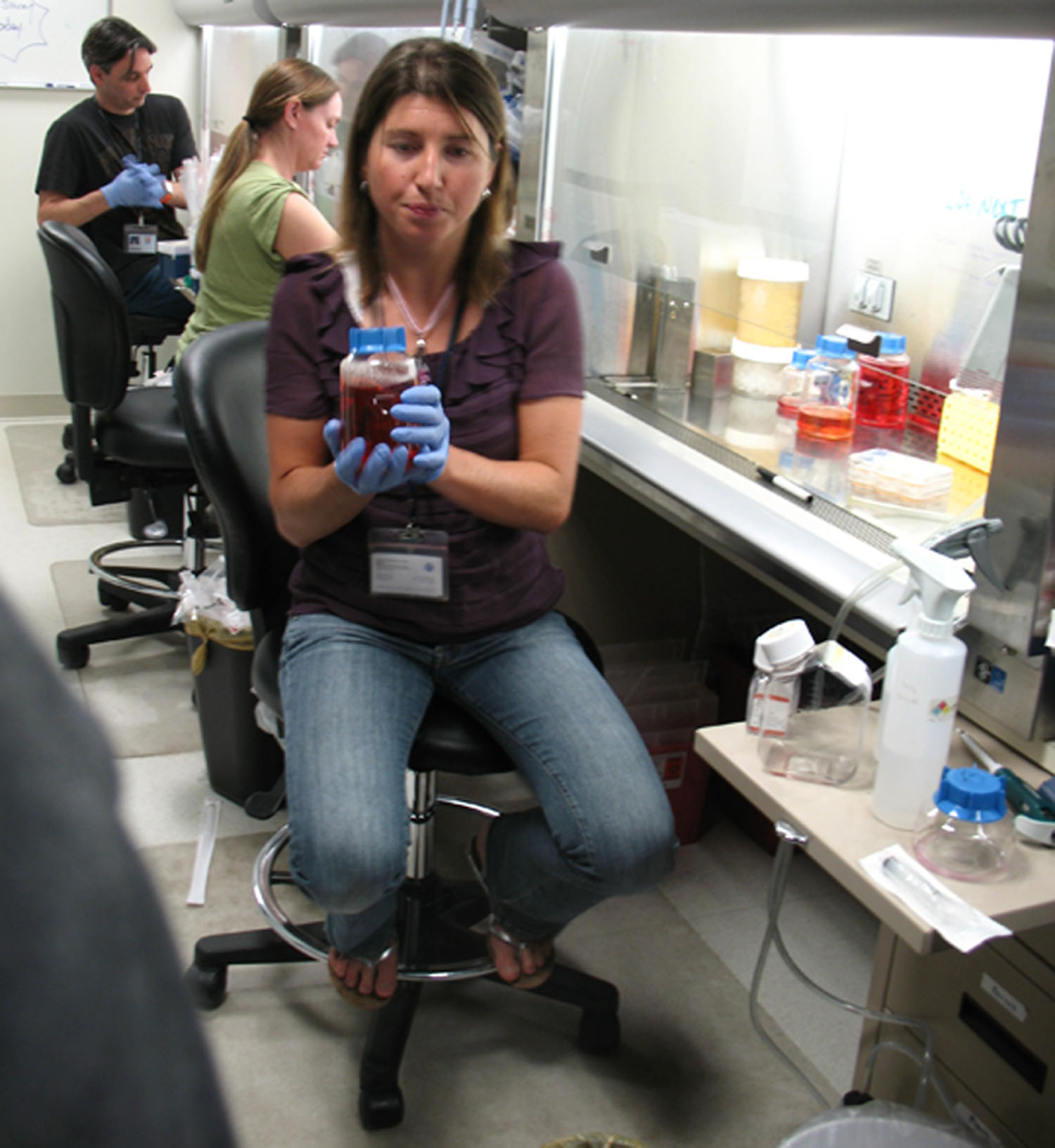Lunch time for stem cells
Kristen Brennand is trying to tease out how the cells in brains of healthy people differ from those in schizophrenic patients. The problem: No one wants to give up a chunk of brain for her to study. So she’s fashioning her own clumps of brain cells from tissue people willingly part with – skin.

In the lab, it takes her a month to regress mature skin cells into immature I-could-be-anything starter units – or stem cells. It takes another three months to coax these into becoming neurons, the type of cells that populate the brain.
Embryonic stem cells could do the same thing. But there’s a lot of political baggage that comes with using them in research. Moreover, Kristen points out, by selecting skin cells from adults with and without disease, she can be reasonably confident the neurons these cells develop into will reflect the differences in their donors’ brains.
Kristen works at the Salk Institute in La Jolla, Calif. And yesterday, reporters in nearby San Diego got a chance to visit a number of Salk labs, including hers, to learn about some of the biomedical puzzles they’re working to solve.
It was a whirlwind tour, so we didn’t spend long in any lab. We caught a couple new videos that show how dendrites and glial cells in the brain cohabit, linking with and swirling around each other. The focus in this lab: those synapses where signaling molecules spit out by one cell fly over to share some information with a neighboring cell. To understand the architecture of these densely packed communities of cells, Salk scientists shaved a tiny region of brain tissue into thin slices and recorded the precise structure and position of cell type in each. Later, computers would digitally reassemble these slices to make the videos, ones in which neuroscientists could isolate individual cell types or assemblages and blow them up for perusal on the big screen.
In other labs, we heard about the electrophysiology being studied as the basis for a potential prosthetic retina – this, for people who lose their sight to genetic disorders, and how spinal-cord cells respond to their environment – sniffing out proteins that they like and shrinking back from those they don’t. We saw videos of these actions as well.
But we got to see the most in Kristen’s lab, where she was preparing to feed her stem cells. They live in dishes stored in a “clean room” – kept clean, she explains, “not to protect you. Nothing in here is going to make you sick. But you could make my cells sick. So for the sake of my experiments, we’re all going to put on nitrile gloves.” And we did.
She pulled some cells out of their incubator for show and tell. As Kristen slid a couple of flat-plated dishes under microscopes, she pointed out that the long, spindly cells that were easy to see were not her prized stem-cell babies. The long ones are fibroblast cells that help feed the stem cells.
The meal they all receive is mixed up daily. Each 650 milliliter batch that the cells collectively chow down each day costs $80. Kristen follows a precise recipe, combining water, sugar, salts, amino acids, a plasma-derived product (what she describes as a shelf-stable cell-free blood-replacement material developed for Army medics working on the battlefield), a mystery concoction (some proprietary protein-rich material sold to all stem-cell growers) and a growth tonic known as fibroblast-growth-factor 2.
The resulting soup is a deep reddish liquid. Its color reflects the pH indicator added to confirm that it has a neutral pH when administered. In the dish, the soup gradually lightens into a more golden hue as it picks up acids from the wastes spewed by growing cells.
Kristen notes that she has to be around to feed her brood daily and occasionally give her cells a bath (washing out the wastes). Sometimes she even has to find her cells new homes if they begin to crowd each other. All of this nurturing means “we don’t travel a lot,” she notes of her cadre of stem cell scientists at Salk. Then again, if you’re going to be stuck some place for months on end, one could do a lot worse than an ocean-front lab in sunny, temperate La Jolla.







